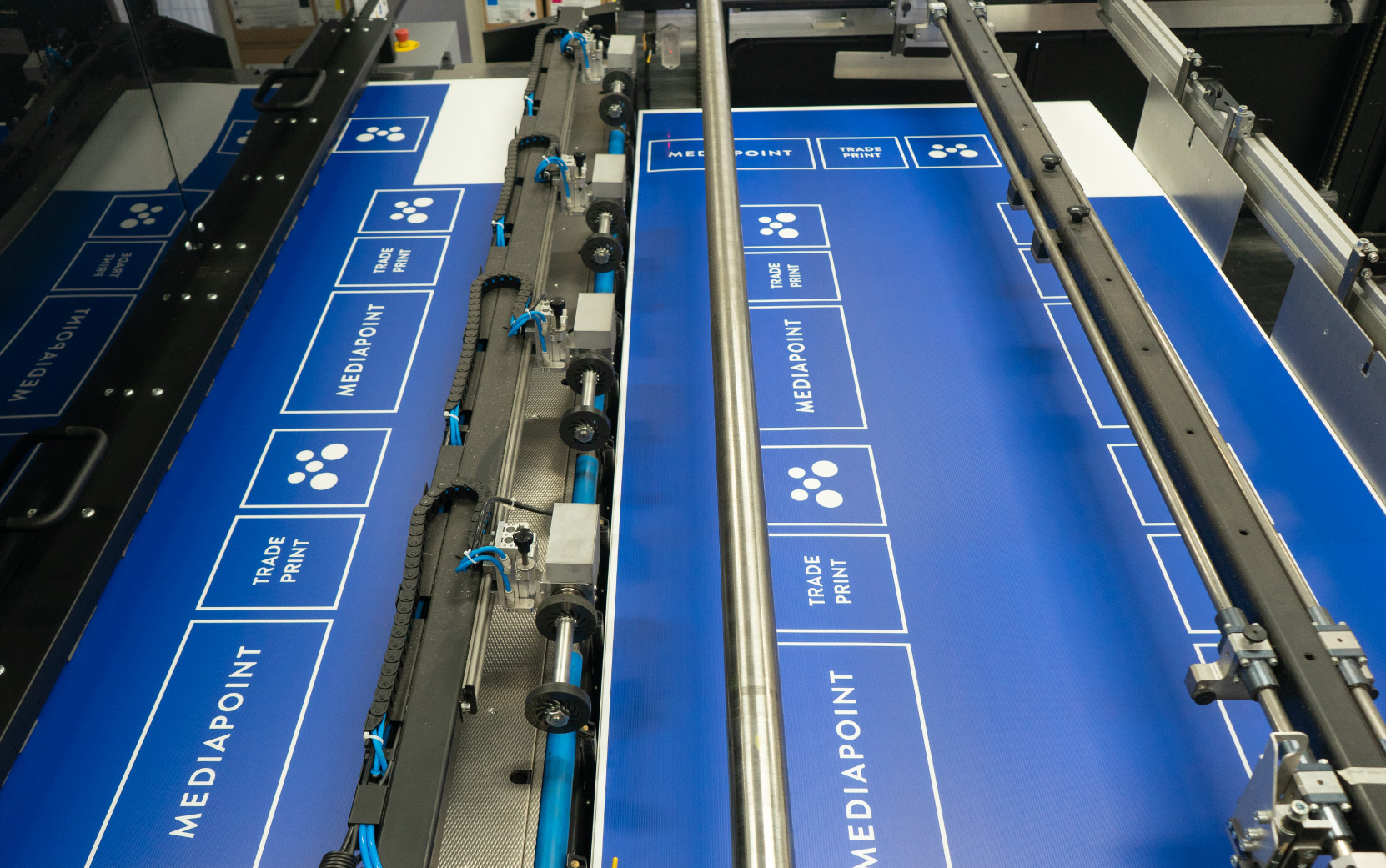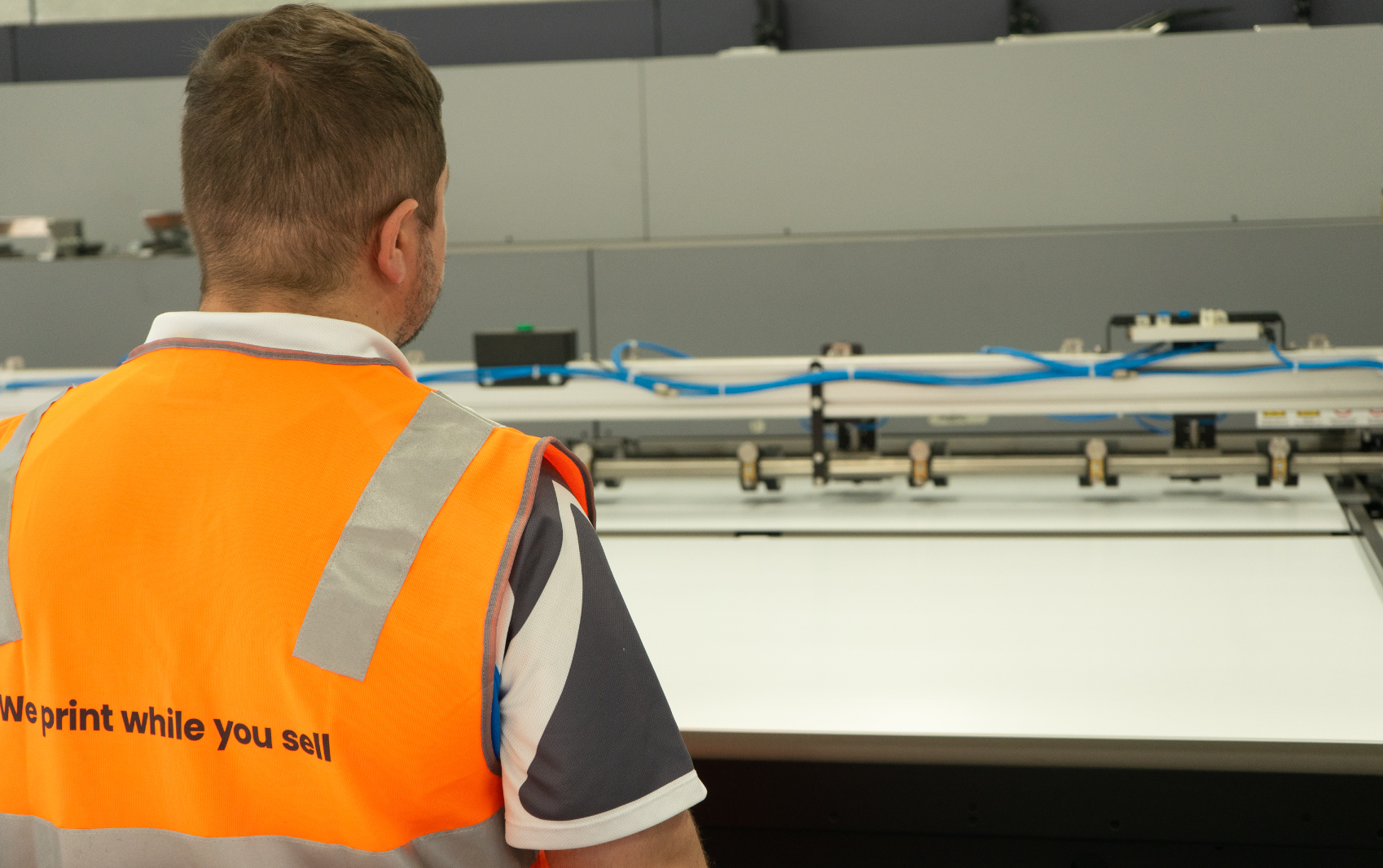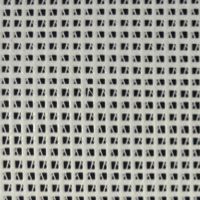There are several factors that determine the true cost when you buy a large format printer. Jamie Xuereb discusses them in the video below and outlines the costs further in this article.
Everyone Gets Distracted by Physical Equipment Cost
We often see people get sucked in by the cost of a large format printer itself. They only look at this number as a metric to determine quality of the asset, the capital required and expense to the business. But we believe that there are several important factors besides the cost of the printer. The main elements to consider are:
- Print Mode
- Ink Costs
- Service Fees
- Floor Space.
The Effects of Different Print Modes
You always want to work any cost calculations on the ‘go to’ mode that you want to print at. This is how print line capacity is throttled; directly impacting ROI. We are notorious for knuckling honing in on optimal print modes when acquiring a new equipment. The key is to identify a mode that eliminates banding in print and provides a balance of speed. This way we can ensure we sustain our service level to our reseller customer and prints are of a good quality.
We do not get swayed by the fastest modes on a printer – even though it is easy to! Each printer will have a different sweet spot that provides the optimal results. We account for reduced speed through batching and other pre / post print processes. That’s how Mediapoint can support the needs of our high-volume resellers without sacrificing quality.
Consider Ink Cost When You Buy a Large Format Printer
The ink cost (per square meter) is very important, particularly for higher volume use. It’s imperative that you calculate the price of your printer based on average usage throughout its useful life.
For example: Say a new large format printer will have a 4 year useful life. You could anticipate doing 100,000 square meters of print during that time. You’ll want to work out the total cost with ink required for that volume, as well as any servicing fees in the 4 year period.
On that note…
When You Buy a Wide Format Printer You’ll Require Servicing
This is the part that most print equipment salespeople do not like to talk about. However we can’t stress enough how much this can influence the true cost. At Mediapoint we have found maintenance costs with certain brands to be unfeasible.
When you buy a large format printer, investigate the square meters of printing it can produce before certain servicing is required. Make sure to keep this top-of-mind and factor into your costings.

Large Printers Require Significant Amount of Floor Space
When it comes to commercial printing, new equipment ties up more floor space. There is a material cost to this (buying / leasing space) and an opportunity cost (using the space for something else). Don’t forget that on top space for each piece of equipment we need room for handling stock, to a working and dispatch area.
To give you an example: at Mediapoint we have over 2000sqm of internal warehouse space. Now whilst not all of that is used at the moment (we are future proofing for further expansion), a significant portion is takin up by our printing equipment. Real estate is a major, yet often overlooked, reason why business scaling is challenging for print shops.
If you’re looking to buy a large format printer to cater for demand growth, first consider a trade printing partner like Mediapoint. We have 16+ years experience dealing only with resellers, allowing them to expand their businesses efficiently. Contact us today to discuss your requirements.












 This stock is suitable for fence banners needing a more solid construction. As it not perforated the whole image is printed and lands on the material, the whole image is shown. So the benefit here is for anyone who wants the maximum impact of their mesh fence panels as the most punchy print is visible. As it is a heavier stock (we offer a 510gsm), it also means the banner is going to be more durable over time.
This stock is suitable for fence banners needing a more solid construction. As it not perforated the whole image is printed and lands on the material, the whole image is shown. So the benefit here is for anyone who wants the maximum impact of their mesh fence panels as the most punchy print is visible. As it is a heavier stock (we offer a 510gsm), it also means the banner is going to be more durable over time.


 As this stock is constructed with polyester, it is often considered as a fabric mesh. Typically it has a 115gsm weight, it is the lightest option out of the mesh fence panels material outlined in this post. This makes transporting this stock the easiest out of all of the options here. Due to the makeup of the threads, a lot of the print can be shown which makes this a fairly punchy print stock. This stock is often used for outdoor events.
As this stock is constructed with polyester, it is often considered as a fabric mesh. Typically it has a 115gsm weight, it is the lightest option out of the mesh fence panels material outlined in this post. This makes transporting this stock the easiest out of all of the options here. Due to the makeup of the threads, a lot of the print can be shown which makes this a fairly punchy print stock. This stock is often used for outdoor events.

